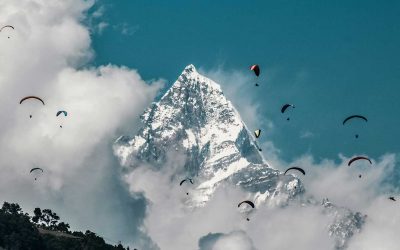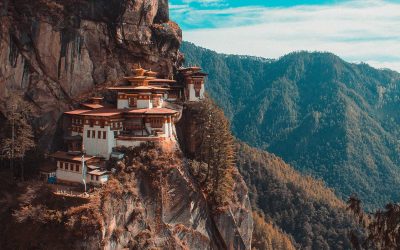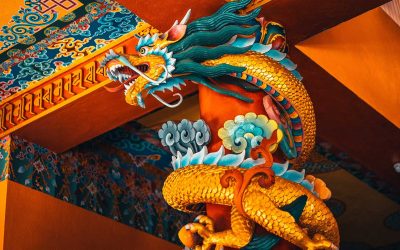Overview
Explore the cultural highlights of Nepal by visiting Kathmandu Valley and exploring its religious and cultural attractions. Catch a scenic flight to the beautiful lakeside city of Pokhara. This trip combines an amazing mix of ancient history with great day activities for the more adventurous travelers, and an opportunity to enjoy the more peaceful moments Nepal has to offer.
- Sightseeing trip of Kathmandu- Pashupatinath Temple, Swayambhu Stupa, Patan Durbar Square and Kathmandu Durbar Square
- Sightseeing trip of Pokhara- Bindhabasini Temple, Davis Temple, Gupteshwar Lake, Phewa Lake and Mahendra Cave
Day 1
Arrival at Kathmandu
Arrival at Kathmandu. Our Representative will receive you at the airport. Transfer to the hotel.
The Katmandu Valley, the political, commercial and cultural hub of Nepal, is the first for the majority of visitors to Nepal. Once a separate kingdom in itself, it contains three fabled cities – Katmandu, Patan and Bhaktapur. Each is an artistic exposition of graceful temples, elegant palaces, brick paved courtyards and quaint streets. There are seven UNESCO World Heritage sites in the valley.
In the afternoon visit the DURBAR SQUARE. It is the historic seat of royalty. The Durbar Square, with its old temples and palaces, epitomizes the religious and cultural life of the people. It is here that kings of Nepal are crowned and their coronations solemnized. Interesting things to see here are: Taleju Temple built by King Mahendra Malla in 1549 AD, the temple of Kal Bhairav, the God of destruction, Nautalle Durbar, Coronation Nasal Chowk, the Gaddi Baithak, the statue of King Pratap Malla, the Big Drum and the Jagannath Temple.
On the right hand corner, a large wooden lattice screen hides an enormous gilded face of Sweta Bhairav. The screen is removed only during the Indra Jatra festival. There are also the Numismatic Museum and Tribhuvan Museum inside the Hanuman Dhoka Palace building. Photography is prohibited inside the museum. Both the museums remain closed on Sundays, Mondays and government holidays.
Overnight will be at Katmandu.
Day 2
Katmandu:
Breakfast will be at hotel.
OPTIONAL: Take an early morning EVEREST FLIGHT for a view of the majestic HIMALAYAS and the MOUNT EVEREST.
Proceed for visits to PASUPATINATH, SWAMBHUNATH & BOUDHNATH.
The temple of Lord Shiva, Pashupatinath, with two tiered golden roof and silver door is considered one of the holiest shrines for Hindu. It is Top Hindu temple of the world. Although only Hindus are allowed inside the temple, visitors can clearly see the temple and the activities performed in the temple premises from the eastern bank of the Bagmati River.
The Buddhist temple of Swayambhunath situated on the top of a hill west of the city is on the most popular and instantly recognisable monkeys which guards the hill and amuses visitors and devotees with tricks, including sliding gracefully down the double banisters of the main stairway to the temple. The roving monkeys quickly snatch up any offerings of food made by devotes and will just as quickly grab anything you may be carrying.
Proceed to visit BOUDDHANATH. The Stupa of Bouddhanath lies 8 km east of Kathmandu. This ancient colossal Stupa is one of the biggest in the world, and the center of Tibetan Buddhism in the world.
Overnight will be at Kathmandu.
Day 3
Kathmandu- Pokhra:
By Air
Breakfast will be at hotel. Proceed to airport for your local flight to the tranquil valley – Pokhra.
Reach Pokhra, transfer to hotel, refresh & relax with the spectacular panorama of Annapurna range forming the backdrop.
Stretching from the east to west, the Annapurna massif includes Annapurna I to IV and Annapurna South. Although the highest among them is Annapurna I (8091m), it is Machhapuchhre (the fishtail), which dominates all others in this neighborhood. Boastfully levitating in the skyline, the fish-tailed pinnacle is the archetypal snow-capped, needle-pointed mountain.
Pokhra is a remarkable place of natural beauty. Situated at an altitude of 827m from the sea level and 200km west of Katmandu valley, the city is known as a center of adventure. The enchanting city with a population of around 95,000 has several beautiful lakes and offers stunning panoramic views of Himalayan peaks. The serenity of lakes and the magnificence of the Himalayas rising behind them create an ambience of peace and magic. It is part of a once vibrant trade route extending between India and Tibet. To this day, mule trains can be seen camped on the outskirts of the town, bringing goods to trade from remote regions of the Himalaya. This is the land of Magars and Gurungs, hardworking farmers and valorous warriors who have earned worldwide fame as Gurkha soldiers. The Thakalis, another important ethnic group here, are known for their entrepreneurship. The climate of Pokhra is slightly warmer than Katmandu with daytime temperature hovering around 15 degrees Celsius in winter and 35 degrees in summer. The monsoon season which lasts from mid-June to mid-September is very wet; in fact Pokhra records the highest rainfall in the country.
The activities of foreign visitors to Pokhra focus around two districts known as Damside and Lakeside (or Pardi and Baidam, in Nepali, respectively). These two areas, with their strips of hotels and restaurants, are a few kilometers south-west of the main Pokhra bazaar.
Overnight will be in Pokhra.
Day 4
Pokhra:
We start our day with the early morning visit to Sarangkot for the fabulous sunrise. After the spectacular sunrise, we drive back to our hotel to start our remaining activities for the day with the breakfast at the hotel.
Today, we take you to the famous Devi’s Fall (also known as Devin’s or David’s) locally known as Patale Chhango (Hell’s Fall), an awesome waterfall lying about 2 km south-west of Pokhra Airport on the highway to Tansen. Legend has it that a trekker (Devin, David…) was washed away by the Pardi Khola and mysteriously disappeared down into an underground passage beneath the fall.
Bindhyabasubu Temple at the old bazaar, Seti Gandaki, the boisterous river running completely underground at the places, Mahendra cave (House of Bats), the natures’ wonder at Pokhra & Pokhra Museum.
After lunch, start exploring the city by driving to the Begnas Lake & Rupa Lake located 15 Km from Pokhra divided by a forested hillock called Panchabhaiya Danda, offering the perfect nature retreat with their relative seclusion.
End your trip by visiting the Tibetan Monastery. Overnight will be in Pokhra.
Day 5
Pokhra- Katmandu:
By Air
After breakfast, proceed to the airport for your flight back to Kathmandu.
After check- in, proceed for a day visit of PATAN & BHAKTAPUR.
Patan, the second-largest city in the valley, lies just across the Bagmati River from Kathmandu, but it’s a much quieter and less frenetic place to visit. The city is justly proud of its temples and artisans and it is their handiwork that provides the focus of the stunning Durbar Square – choc-a-block with the largest display of Newari architecture in Nepal. It includes the Royal Palace, which contains a richly decorated bathtub, and the two-tiered brick Jagannarayan Temple.
Look up to the roof struts to see carvings of figures engaged in quite athletic acts of intercourse. A few minutes’ walk north of the square is the Golden Temple, a Buddhist monastery guarded by sacred tortoises that potter around the courtyard; and the Kumbeshawar, reputedly the oldest (1392) temple in Patan. South of the square is an area of charming streets lined with metal smiths and Brassware shops. Patan’s other attractions are flung further. Among them is a collection of four stupas, thought to have been built over 2500 years ago, and Nepal’s only zoo, which features a reasonable assortment of rhinos, tigers, leoards and bird life. Palm readers gather in the park outside – they may be able to point out which animal you’ll be reincarnated as.
Situated at an altitude of 1,401m, Bhaktapur covers an area of four square miles. Bhaktapur or the city of Devotees still retains a medieval charm and visitors to this ancient town are treated to myriad wonders of cultural and artistic achievements. The past glory of the Malla rulers continues to be reflected at the Durbar Square. Pottery and weaving are its traditional industries. Bhaktapur is famous for woodcarving, the Bhadgaolen topi (cap) and curd. The city lies about 14 km east of Kathmandu.
Overnight will be at Kathmandu.
Day 6
Katmandu – Departure
After breakfast, you will be transferred to the airport to board your flight back home or to the next destination.
Tour ends
Book Now
Recommended Tour
10 Days Mountains & Wildlife of Nepal
Explore this amazing Mountains & Wildlife tour of Nepal to experience the nature, rich culture, and wildlife experiences the country has to offer. During this trip you will visit temples, historical…
8 Days Best Of Bhutan Experience
Discover the soul of western Bhutan – a beautiful kingdom hidden in magic and mythology. Mostly covered by vegetation, the Thunder Dragon country offers loads of exotic wonders. From the splendid mystery…
13 Days Introduction to the Himalayas Nepal & Bhutan
Get off the beaten track and discover the wonders of Bhutan, a unique nation which has retained its age old customs, traditions and lifestyle. Then continue on to Kathmandu to explore Nepal with its awe-inspiring…





